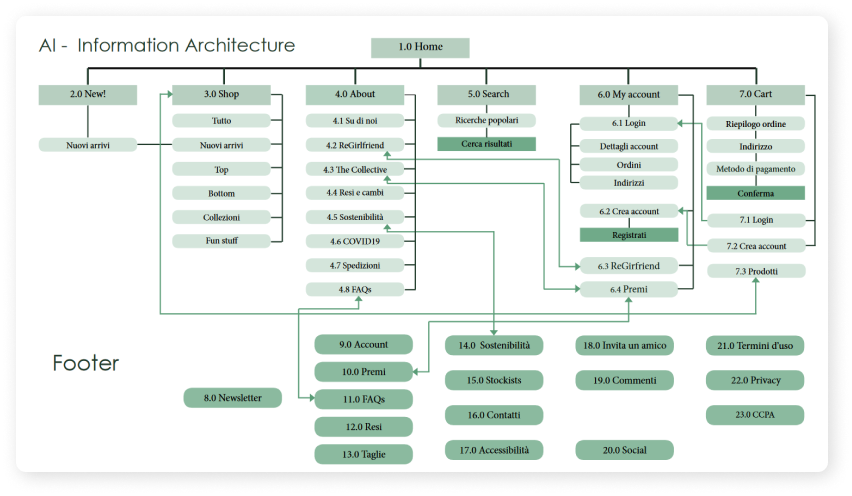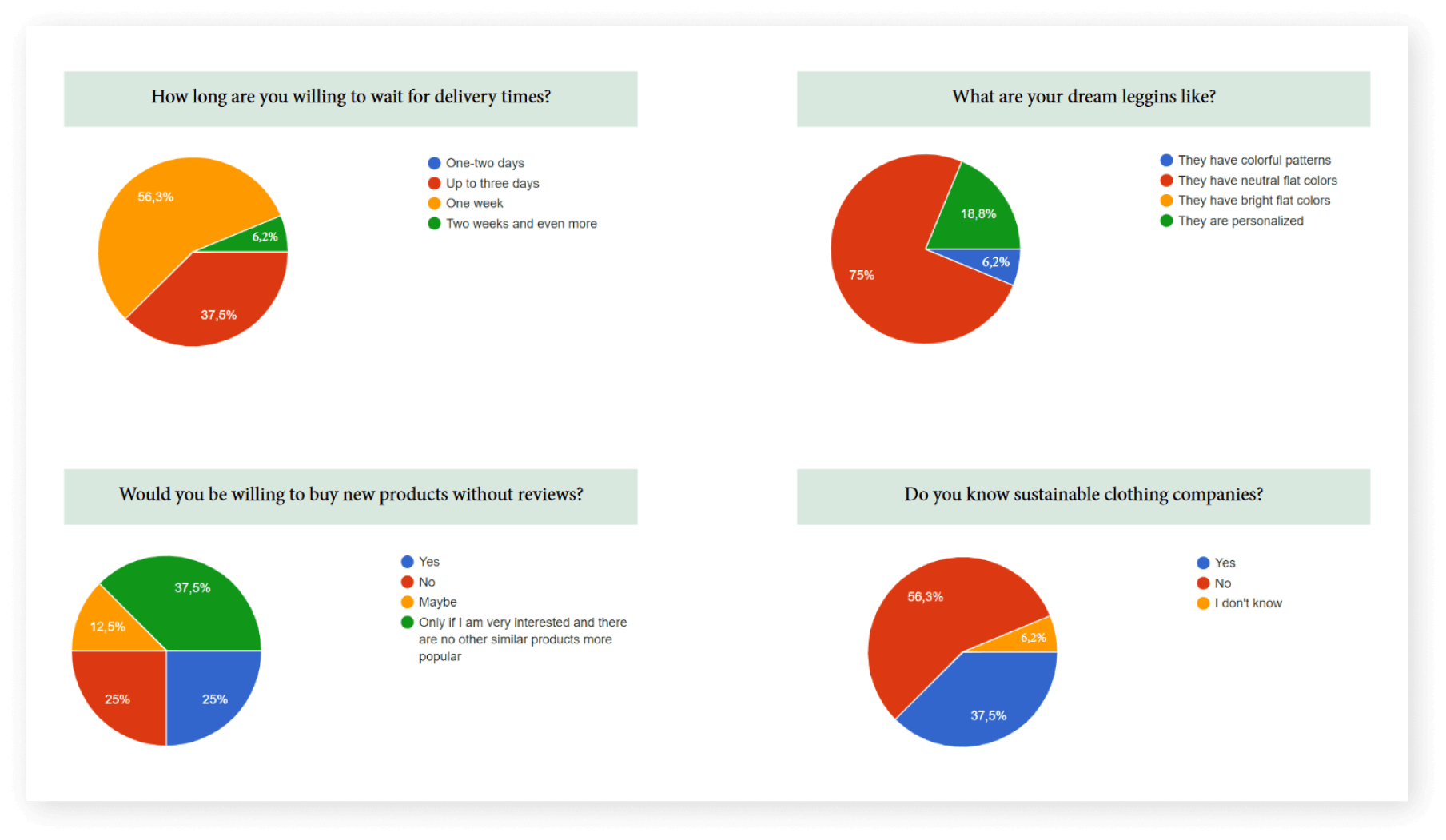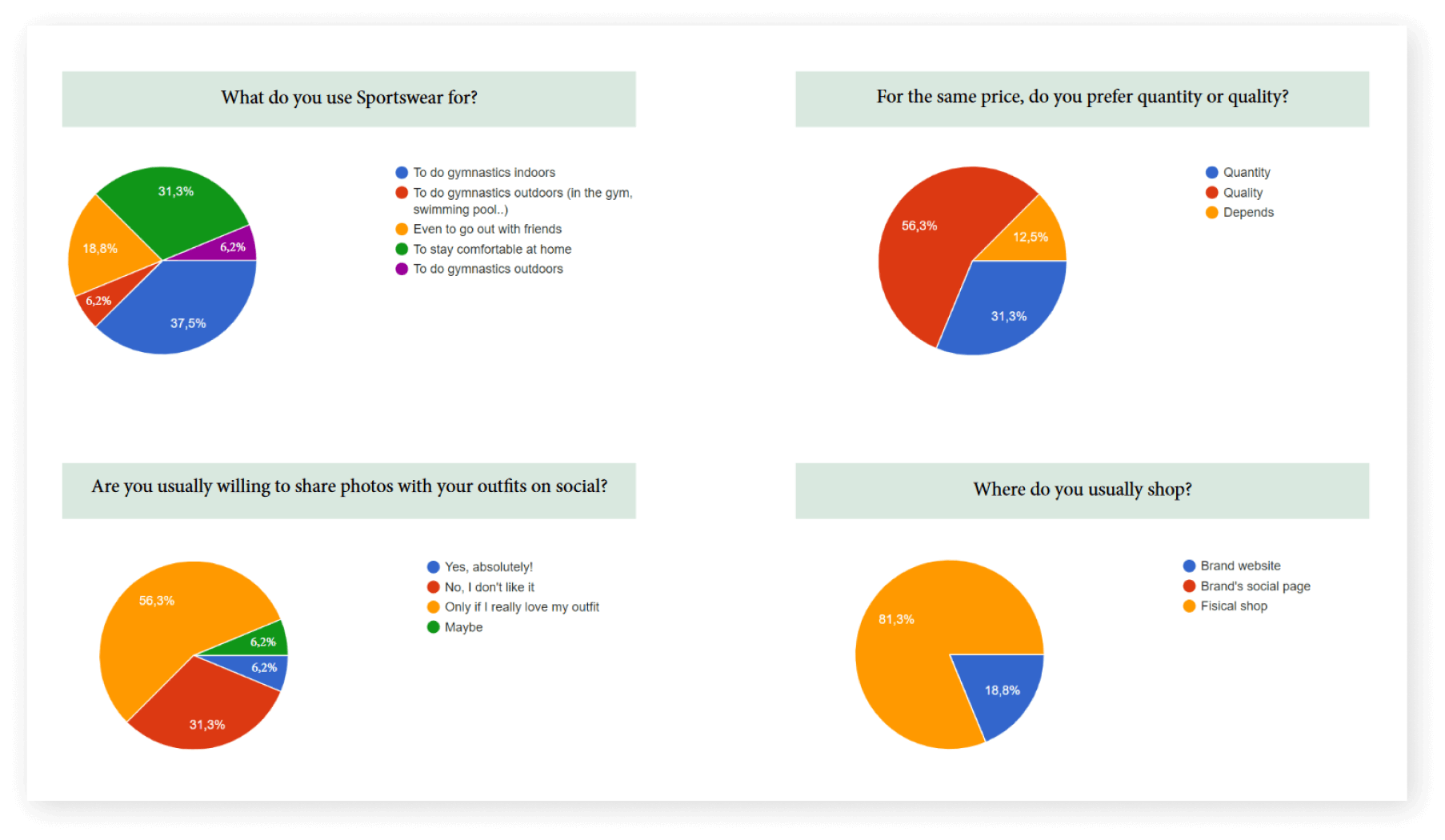Girlfriend Collective
Project created for the UI-UX design course by Start2impact during the 2021. Ecommerce analysis Girlfriend Collective, retailer of sustainable and ethical clothing.
- My role: UX designer
- Date: November 2021
- Case study, UX design Exercise
- My role: UX designer
- Date: November 2021
The Goal
The goal was to conduct an in-depth analysis of the brand to understand its strengths and growth opportunities.
My role as a UX Designer
In this project I analyzed the competitors, carried out the preliminary brand classification activity and conducted surveys on the reference target. After the analyses, I researched strengths and growth opportunities based on the interviews, Jakob Nielsen’s heuristics, best practices of UI design and accessibility.
Tools
Indesign, Google Form, Figma

Analysis of the brand
The brand, with its sustainability mission, enjoys broad consensus among its target audience because this age group is particularly sensitive to climate change. The brand’s language is direct, free of technical jargon, and particularly casual, creating a friendly atmosphere that is different from the traditional professional aura of large (and unscrupulous) companies. It is a brand that addresses people before consumers.
One of the brand’s characteristics that is not often found on fashion websites is the use of models who deviate from the usual beauty and body standards. This allows users to identify with the brand and appreciate its flexibility and fit even on larger body types.
Top competitors features
- Wishlist
- Eco ant Ethic Certifications
- Live Chat
Commitment to sustainable projects and activities - Shipments with recycled and recyclable packaging
- Latest generation raw materials
- Using social media and sharing to get discounts or points












Analysis of the target
Age: between 16 and 25 years old
Budget: €30-50 on average (6.2% over €100)
Buys actiwear every season, Leggings are the most purchased products and Adidas is the preferred brand. From the results, it emerged that 100% of those interviewed know the importance of sustainable production but only 50% buy green products. 37.5% of people would spend more on eco-certified and sustainable clothes.
People consider material (37%) as a priority. Given the same price, quality is still preferred over quantity. 68.8% would recommend more expensive but sustainable clothing to friends but at the same time, most of those interviewed (56.3%) admit to not knowing fashion companies committed to fighting pollution.
Most people are willing to buy products without reviews but only if they have no alternative and are really interested (37.5%) while 25% would not buy them.
Personas



User Journey
Possible solutions
- Special and daily offers: new section to allow even less well-off users to access the Girlfriend Collective products.
- Points: make collections or events with point collections
- Sustainable projects: participate and advertise sustainable projects
- Filters on reviews and prices: to make browsing more efficient and effective
- Translation of units of measure also in cm: to also allow buyers outside the USA to buy branded products
- Colored Patterns: collection of products available with the brightest patterns and colours
- Wishlist: list of favorite garments (to buy later and to always have them disposition)
- Register with social: to register faster via social or email
- Live chat: to communicate more directly and quickly with the Girlfriend Collective team
- Reviews: make review stars visible in product archives
Wireframe low-fi

Wireframe hi-fi
